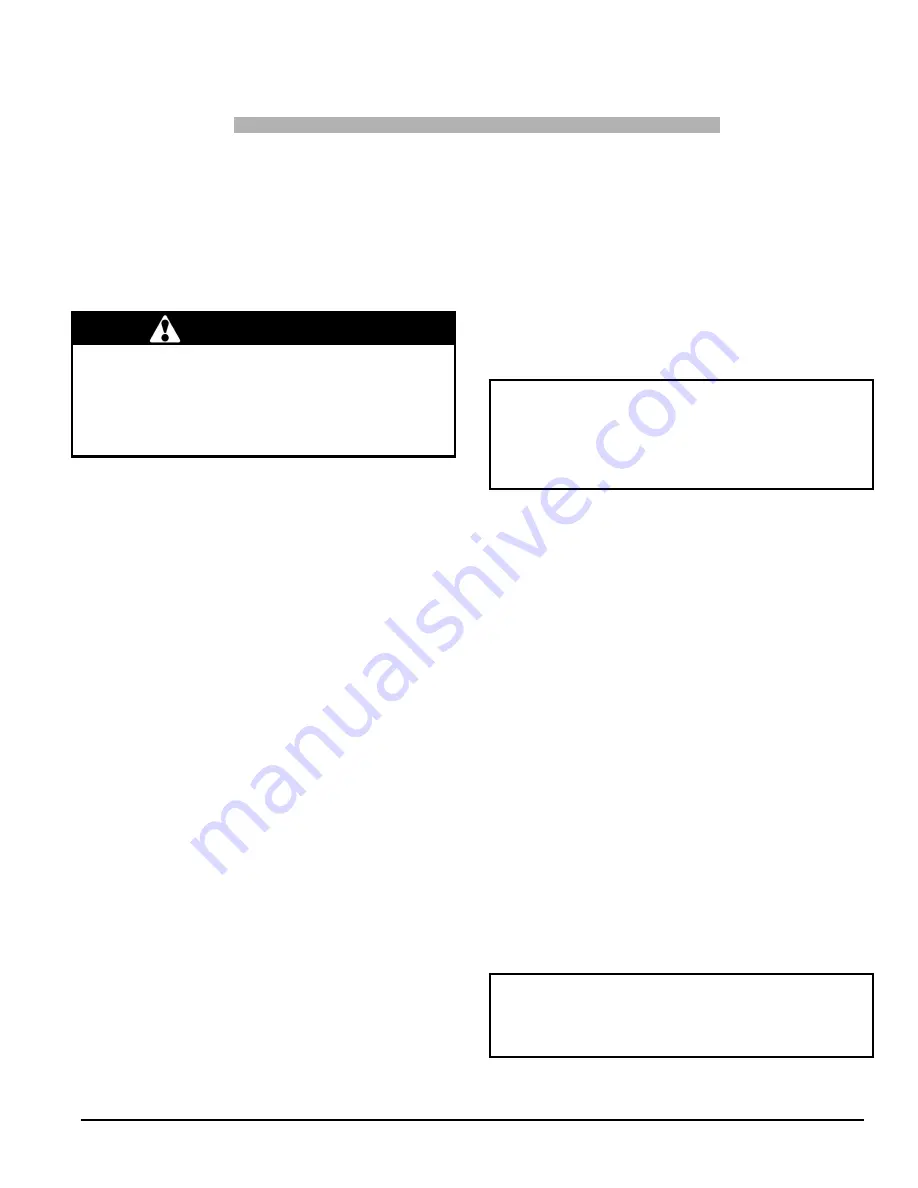
9
PART 3
MAINTENANCE
3.1)
GENERAL
Preventive Maintenance
Preventive maintenance is the best way to avoid unnecessary
expense and inconvenience. Have your heating system and
burner inspected at regular intervals by a qualified service
technician.
After each annual inspection of the unit, a complete combustion test
must be performed to maintain optimum performance and reliability.
WARNING
Electrical shock hazard.
Turn OFF power to furnace before any disassembly
or servicing.
Failure to do so can result in property damage,
bodily injury and/or death.
Do not tamper with the unit or its controls. Call a qualified
service technician.
Before calling for service, check the following:
a.
Check the oil tank gauge and check if valve is open;
b.
Check the fuse or circuit breaker;
c.
Check if the shut-off switch is “ON”;
d.
Reset the thermostat above room temperature;
e.
If ignition does not occur turn off the disconnect switch and call a
qualified service technician.
When ordering replacement parts, specify the complete furnace
model number and serial number.
3.1.1) Heat exchanger cleaning
Ordinarily, it is not necessary to clean the heat exchanger or flue pipe
every year, but it is advisable to have a qualified oil burner serviceman
check the unit before each heating season to determine whether
cleaning or replacement of parts is necessary.
If cleaning is necessary, the following steps should be performed:
1.
Turn “OFF” all utilities upstream of the furnace;
2.
Disconnect the flue pipe;
3.
Remove the flue collar panel located at the front part of the
furnace;
4.
Remove the radiator baffles;
5.
Disconnect the oil line and remove the oil burner from the
furnace;
6.
Clean the secondary tubes, and the primary cylinder with a stiff
brush and vacuum cleaner;
7.
After cleaning, replace the radiator baffles, flue collar plate and
oil burner;
8.
Readjust burner for proper operation.
Soot will have collected in the first sections of the heat exchangers
only if the burner was started after the combustion chamber was
flooded with fuel oil, or if the burner has been operating in a severely
contaminated condition.
3.1.2) BLOWER REMOVAL
To remove the blower from the furnace:
1.
Turn “OFF” all utilities upstream of the furnace;
2.
Remove the burner access door and blower door;
3.
Remove the blower retaining screw (on the blower rail);
4.
Remove cover from control box and disconnect the thermostat
and power wires from the board;
5.
Slide the blower on the rails toward the front of the unit;
6.
Reverse the above steps to reinstall the blower. (Refer to the
wiring diagrams, Figure 4, p. 14 of this manual or the diagram
located on the inside of the blower door to properly rewire the
unit.)
CAUTION
Be sure the blower is adequately supported when
sliding it off the mounting rails, especially in the
horizontal configuration, in order to prevent dropping
the blower and injuring yourself or damaging the
blower.
3.1.3) Burner drawer assembly
Remove the drawer assembly. Clean all foreign matter from the
retention head and electrodes. If a Beckett AFG burner is installed, the
burner will have to be removed to check the retention head.
3.1.4) Nozzle
Replace the nozzle with the one specified in Table 2, p. 12.
3.1.5) Oil filters
Tank filter
The tank filter should be replaced as required.
Secondary filter
The 10 micron (or finer) filter cartridges should be replaced annually.
3.1.6) Air filters
Air filters are the disposable type. Disposable filters should be
replaced at least once a year. Dusty conditions, presence of animal
hair etc. may demand more frequent filter changes. Dirty filters will
impact furnace efficiency and increase oil consumption.
3.1.7) Motor lubrication
Do not lubricate the oil burner motor or the direct drive blower motor
as they are permanently lubricated.
3.1.8) Blocked Vent Shut Off (BVSO) Cleaning
CAUTION
Do not dent or scratch the surface of the thermal
switch. If the thermal switch is damaged,
replacement is required.

































